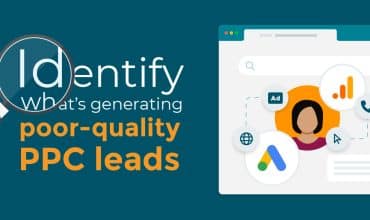Private healthcare marketing’s curious quirks laid bare
Does your marketing always deliver results? Or does it flop mysteriously? Dental practices, private clinics, care homes and other healthcare businesses are starting to discover a curious quirk going on behind their campaigns.
Digital dreams paying off?
Running a digital marketing campaign is easy. You can set the wheels in motion on your mobile in the time it takes to froth up a cappuccino. Pay-per-click, Facebook ads and other digital channels whirr into action instantly.
The money side of things works neatly too: You set the budget and then watch the results come in.
And this is fine if you want someone to download your accountancy app, your first novel on Kindle or your latest album on iTunes. It’s true, digital advertising can deliver jaw-dropping results.
But what about in the private healthcare marketplace?
What you may have missed…
Digital marketing usually provides a simple answer to a simple question: It’s all about your words plus some money delivering a set of results (good or bad).
But the story is much more complex if you’re running campaigns for a dentist, chiropractor, cosmetic surgery, podiatrist, optician, or another practice or health-related service.
Here are three reasons why:
Fact #1: Patients don’t always do the obvious thing
If prospects spot your ads online, don’t assume they’ll automatically contact you via Facebook, email or a web form — even though that seems the easiest and most obvious thing to do. The personal nature of the private health sector means they’re likely to pick up the phone.
Researchers discovered that 41% of patients who found a dental practice online then called up to book an appointment. But unless your reception team obsessively asks which website, advert, or post any caller might have seen, then you’ll be none the wiser about which of your marketing activities is paying off. You’re likely to hear “On Google”, or they can’t remember.
Fact #2: Their journey to you is often complicated
Think for a moment about how people book holidays. Everything is personal and must be right. That’s why holidaymakers check out online reviews, watch videos, look at destinations on Instagram, and use Google Street View to scout the local area. All that happens before someone books up.
Something similar goes on within healthcare (and lots of other sectors). In fact, Google found that consumers will engage with a product or service 4.3 times on average before converting.
In other words, it’s not just the last click or call that’ll win business for you. New clients may have seen an advert, picked up a flyer, spotted something on social media, or called the number on the sign outside your practice. And it’s essential to know which of these is delivering results.
Fact #3: Success may be down to an unsung hero
In any team, the real star may not be the top goal-scorer: It could be their striking partner who sets up the chances, again and again, but rarely gets the credit.
With healthcare marketing, it could be a short video that you’ve boosted on Facebook, a guide you’ve written about a new treatment, or an advert that’s been running for weeks in a local paper. In reality, this could be the piece that really convinces potential clients to get in touch.
But if you never find out what’s secretly clinching the deal, then how can you repeat the success?
What’s the answer?
The good news is that you can now join the dots between marketing spend, the moment that potential clients get in touch, and your revenue.
Implementing visitor level call tracking on your website, and using static phone numbers for your offline marketing will help you map out every patient’s journey to your door. Their route may zig-zag between online and offline at various touchpoints. You’ll see where this happens and can then plan your strategy to make sure you’re capturing every opportunity to engage with prospects.
Ultimately, you can discover which marketing activities are paying off and which should be ditched. Only then can you figure out where to best spend your budget to get spectacular results.
Call tracking is fast, easy and affordable for any business. Take a closer look at how it works.



